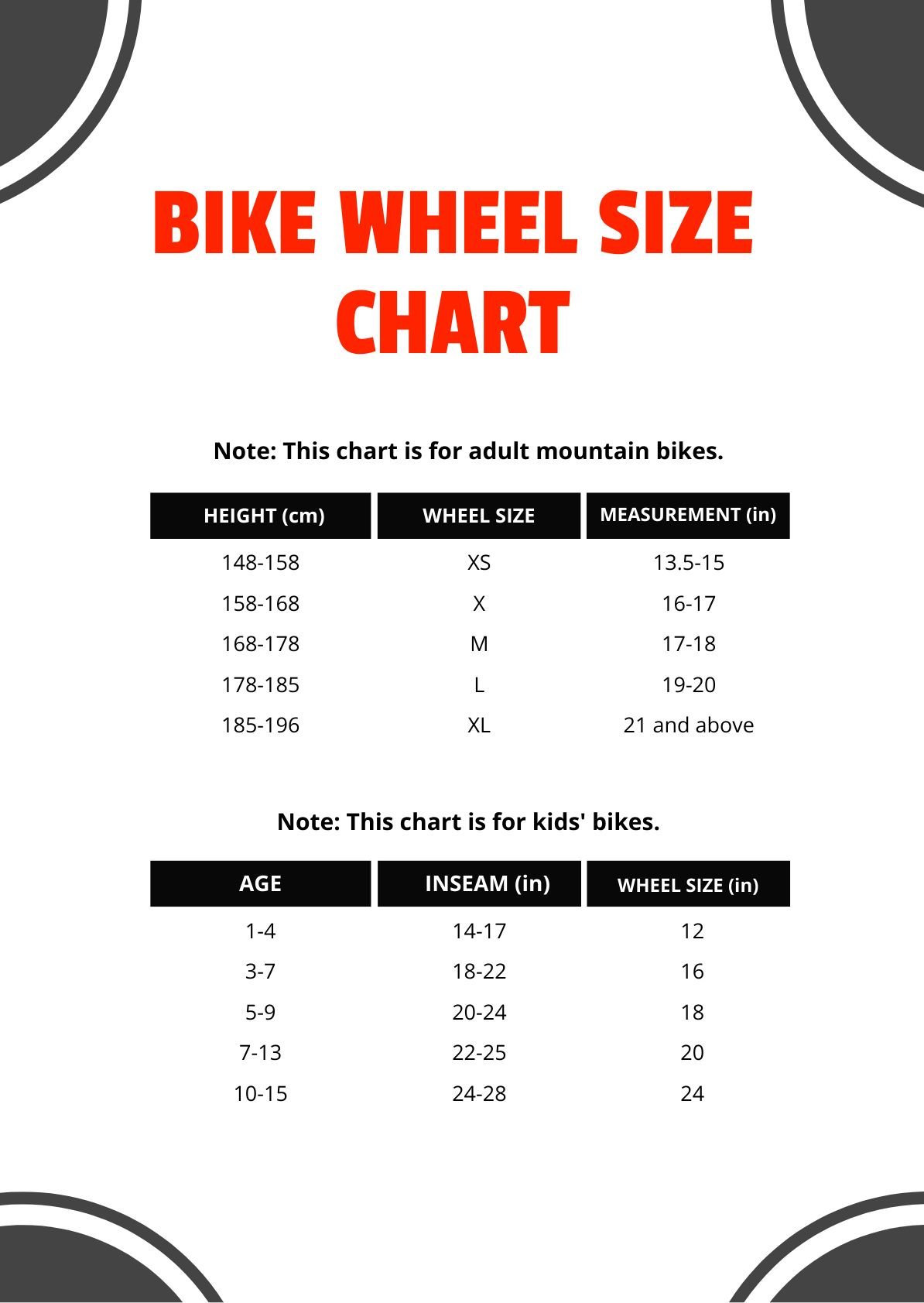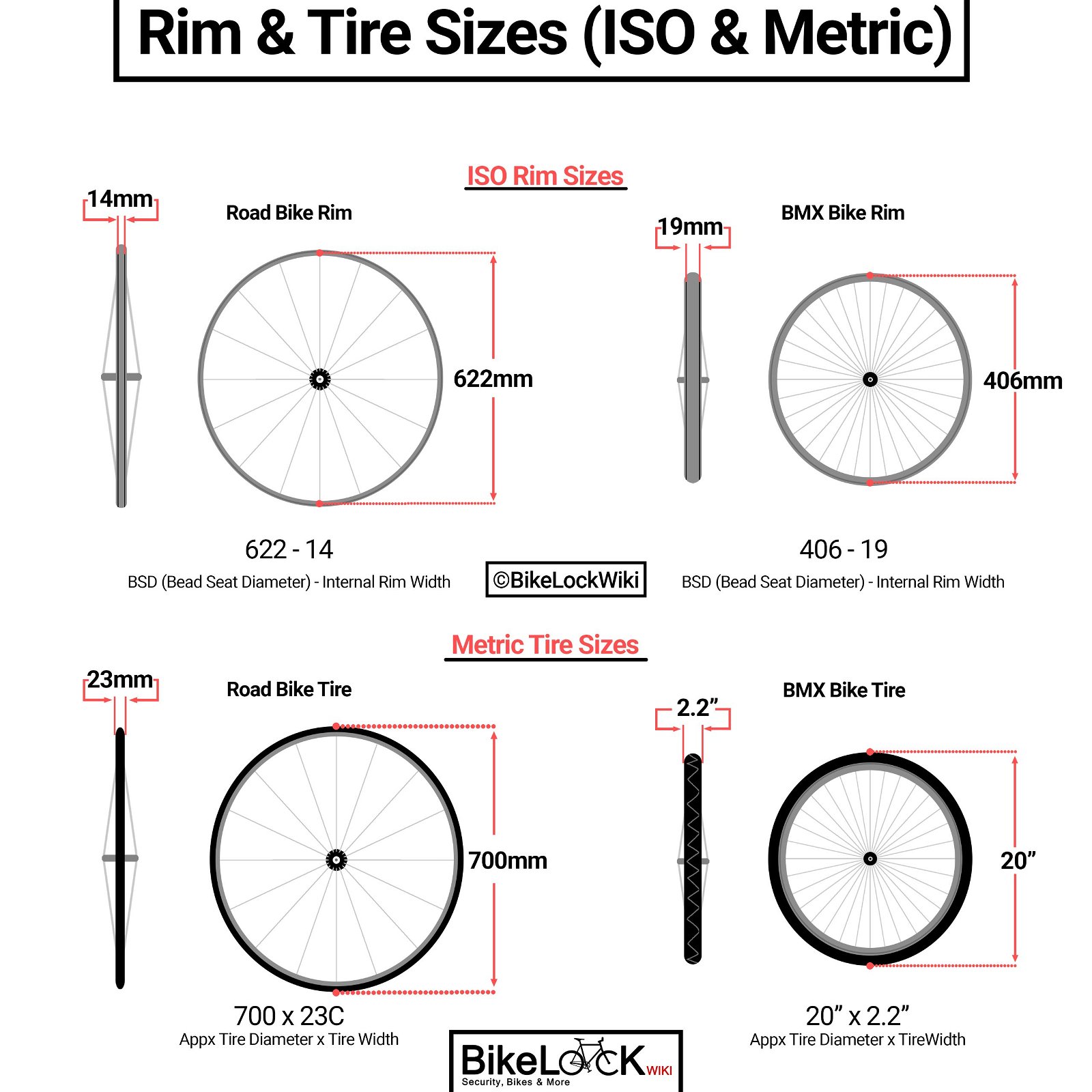Road bike wheels typically come in two sizes: 700c, the standard, and 650b, smaller and more nimble. Your choice affects performance, comfort, and bike handling.
Selecting the right wheel size for your road bike is crucial for optimizing your riding experience. It influences factors such as speed, stability, and the ability to navigate different terrains.
With the dominance of the 700c due to its efficiency and compatibility with most road bikes, it remains the go-to for competitive and recreational cyclists alike.
However, the 650b wheels offer a smoother ride on rough surfaces, making them a popular choice for adventure cycling and riders with shorter stature.
Understanding the dynamics of wheel size can profoundly impact your cycling, whether you’re pushing the pace on a smooth tarmac or exploring less-beaten paths.
Introduction To Road Bike Wheel Sizes
Choosing the correct wheel size for a road bike is crucial. It affects comfort, speed, and handling. Riders must understand the options available. This guide helps select the ideal wheel size for peak performance.
Importance Of The Right Size
Wheel size determines the bike’s fit. A well-fitted bike provides better control and less strain on the body. Riders enjoy longer sessions with the right wheels.
- Better fit equals more comfort
- Correct size prevents injuries
- Ensures efficient energy use
Impact On Performance
Different wheel sizes change a bike’s dynamics. Smaller wheels accelerate faster. Larger wheels maintain speed better. Each size offers unique advantages for performance.
| Wheel Size | Acceleration | Speed Maintenance |
|---|---|---|
| Smaller | High | Low |
| Larger | Low | High |
Choose a size that matches your riding style. Remember, the right wheel improves overall bike performance.

Credit: www.template.net
Standard Sizes Explained
Choosing the right wheel size for a road bike is crucial.
It affects speed, handling, and comfort.
Two standard sizes dominate the market: 700C and 650B.
Riders often pick wheels based on their cycling needs.
Below, learn about each size and what it offers.
700c: The Common Choice
700C wheels are the most popular for road bikes.
Their size provides a balance of speed and stability.
Here are key points about 700C wheels:
- Diameter: Roughly 622mm
- Commonly used for racing and touring
- Offers great efficiency and roll-over ability
Most road bikes come equipped with these wheels.
They suit various riding styles and rider heights.
650b: The Alternative
650B wheels are smaller than 700C.
They are sometimes preferred for certain riders.
Here’s what they offer:
- Diameter: Around 584mm
- Good for smaller riders or those seeking agility
- Provide a smoother ride on rough surfaces
These wheels can improve bike fit for shorter riders.
They also make handling easier on tight turns.
Measuring Your Ideal Wheel Size
Choosing the right wheel size for your road bike boosts performance. It ensures a smooth ride. Proper measurement is key. Let’s explore how to measure the ideal wheel size for your bike.
Tools You’ll Need
- Tape measure – Accurate length assessment
- Calipers – Precise width measurements
- Wheel size chart – Reference for standard sizes
- Notepad and pen – Record measurements
Step-by-step Guide
- Prepare your bike. Stand it upright. Ensure it is stable.
- Measure the diameter. Stretch the tape measure across the wheel. Start and end at the exact tire edges.
- Check the width. Use calipers for the tire’s broadest point.
- Consult the chart. Match your measurements with standard sizes.
- Note your findings. Write them down for future reference.

Credit: www.bikelockwiki.com
Factors Influencing Wheel Size Selection
Choosing the right wheel size for a road bike is crucial. It affects performance, comfort, and safety. Different factors determine the best wheel size for a rider. This guide helps you understand these factors.
Rider Height And Bike Size
The relationship between rider height and bike size is key. Taller riders often need larger wheels for a better fit. Smaller wheels suit shorter riders well. This match ensures optimal control and efficiency.
Rider height directly influences bike size. Here’s a simple breakdown:
- Short riders: Generally prefer 650b or smaller 700c wheels.
- Average riders: Often choose standard 700c wheels.
- Tall riders: May benefit from 29-inch wheels or larger 700c options.
Riding Style And Preferences
Your riding style shapes wheel size choice. Fast, competitive riders often want larger wheels. They roll faster and smoother. Leisure riders might prefer smaller wheels for maneuverability.
Preferences matter too. Some cyclists favor a certain wheel feel. They pick sizes that offer that experience. Others might select based on wheel strength or bike aesthetics.
| Riding Style | Wheel Size |
|---|---|
| Racing | Large 700c |
| Touring | 700c or 650b |
| Leisure | Smaller 700c or 650b |
Comparing Wheel Sizes: Pros And Cons
Choosing the right wheel size for a road bike matters. It affects speed, comfort, and control. Let’s look at two popular sizes and weigh their benefits and drawbacks.
700c Wheels: Speed Vs. Comfort
700C wheels dominate the road bike market. They are known for their ability to maintain high speeds. Their larger diameter rolls over obstacles more smoothly. This makes them a top choice for racing and long-distance rides. Yet, their size can mean less comfort on rough surfaces. Here’s a breakdown:
- Pros:
- Better for speed and momentum
- Smooth over bumps and cracks
- Wide variety of tire options
- Cons:
- Can be less comfortable on poor roads
- May feel too big for some riders
650b Wheels: Maneuverability Vs. Efficiency
650B wheels are smaller, offering better maneuverability. They are great for twisty roads and rough terrain. The smaller diameter means a more comfortable ride. Yet, these wheels may not roll as efficiently as their larger counterparts. This is how they stack up:
- Pros:
- Easier to handle on tight turns
- Better shock absorption
- Good for smaller riders
- Cons:
- Less momentum on straightaways
- May feel slower than 700C wheels
Impact Of Wheel Size On Bike Handling
Impact of Wheel Size on Bike Handling plays a crucial role in the cycling experience. Different sizes affect how a bike responds on roads. Let’s dive into how wheel size influences cornering and stability, as well as acceleration and climbing.
Cornering And Stability
Cornering requires a bike to be agile. Larger wheels often provide a smoother ride. They roll over obstacles more easily. Smaller wheels, however, can turn quicker. They offer more responsive handling. This makes them better for tight turns.
- Large wheels: Smooth out road bumps; better at high speeds.
- Small wheels: Quick turns; agile in urban settings.
Stability comes from wheel size too. Larger wheels have a longer contact patch. This leads to more grip and a steadier ride. Small wheels might feel twitchier. Yet, they are more playful on the road.
Acceleration And Climbing
Acceleration is about how fast a bike can speed up. Smaller wheels are lighter. This means they require less effort to spin. They accelerate faster than larger wheels.
- Large wheels: Take more effort to speed up; hold speed well.
- Small wheels: Zip up to speed quickly; great for sprints.
Climbing involves wheel size as well. Large wheels maintain momentum. They are good for steady, long climbs. Small wheels are nimble. They make quick work of short, steep ascents.
- Large wheels: Keep a steady pace uphill; good for endurance.
- Small wheels: Excel on steep or quick climbs; less rotational mass.
Upgrading Your Wheels: What To Consider
Thinking of upgrading your road bike wheels? Smart move! New wheels can transform your ride. Before you buy, consider a few key points. Let’s dive in.
Compatibility Issues
Check your bike specs before choosing new wheels. Here’s what to match:
- Wheel size: Must fit your bike frame and fork.
- Hub type: Align with your bike’s hub requirements.
- Cassette compatibility: Ensure your gears will fit the new wheel.
- Brake system: Match the wheel’s brake type with your bike’s.
Budget And Value
Wheels come at various prices. Set a budget that works for you. Look for the best value within that range.
| Price Range | Material | Performance |
|---|---|---|
| Low | Aluminum | Basic, durable |
| Mid | Carbon-Aluminum mix | Better stiffness |
| High | Carbon fiber | Light, responsive |
Remember, costly doesn’t mean best for you. Weigh features against your riding style and goals.

Credit: www.ebay.com
Faqs And Myths Debunked
Welcome to the ‘FAQs and Myths Debunked’ section of our Road Bike Wheel Size Guide. We clear up common questions and misunderstandings. Let’s dive into the truths behind road bike wheel sizing.
Can I Switch Between Sizes?
Many cyclists wonder if they can swap wheel sizes on their road bikes. The short answer is yes, but with considerations. Frame clearance and brake compatibility are crucial. Frames must accommodate the new size.
Brakes should align properly with the wheel rim. Always check manufacturer specifications before switching.
Does Wheel Size Affect Speed?
Wheel size can impact speed, but it’s not the only factor. Larger wheels maintain momentum better and roll over obstacles smoothly.
They can be faster on straightaways. Smaller wheels accelerate quicker. They are nimble for sharp turns. Rider skill and road conditions also play a role in speed.
| Wheel Size | Speed | Acceleration |
|---|---|---|
| Large | High | Low |
| Small | Low | High |
Remember, the best wheel size is one that matches your bike, style, and terrain. Personal preference and comfort are key.
Frequently Asked Questions
How Do I Know My Road Bike Wheel Size?
To determine your road bike wheel size, check the tire sidewall for a set of numbers, like 700c or 26 inches. These indicate the wheel diameter, providing the specific size of your bike’s wheels. This method ensures a quick and accurate measurement.
What Height Is A 26 Inch Bike For?
A 26-inch bike typically suits riders with a height range of 5’0″ to 5’5″. It’s ideal for those seeking comfort and control.
Is 700c 28 Or 29?
The 700C typically refers to a 28-inch wheel, not a 29-inch.
What Does 700c Bike Wheel Size Mean?
The 700C bike wheel size refers to a standard diameter of 622mm or approximately 29 inches, commonly used for road bikes.
What Is The Standard Road Bike Wheel Size?
The standard road bike wheel size is generally 700c for most adult road bikes, which equates to about 622mm in diameter.
Conclusion
Choosing the right wheel size for your road bike enhances performance, comfort, and safety. This guide aims to simplify that decision.
Remember, the perfect fit depends on your riding style and physical dimensions. Armed with this knowledge, you’re now better equipped to select wheels that promise a smoother, more enjoyable ride.
Happy cycling!

Steven is a professional cyclist and his passion is cycling. He has been cycling for the last 6 years and he loves using bikes while outing as well. Based on his experiences with the different types of bikes; he is sharing his opinions about various bikes so that a beginner can start right away. Find him on Twitter @thecyclistguy Happy Biking.


Leave a Reply